Why are Ethiopian coffee beans always big and small? Is there any difference in flavor?
For professional baristas, please follow the coffee workshop (Wechat official account cafe_style)
Question1: why are Ethiopian coffee beans always big and small?
If you are very fond of African beans, it should be easy to find that Ethiopian beans are generally of different sizes and have significantly lower evenness than those in Kenya. Whether it is Yega Xuefei or Sidamo, whether it is washing or sunlight, sometimes the same batch of coffee beans can be seen to be significantly different in baking color and particle size.
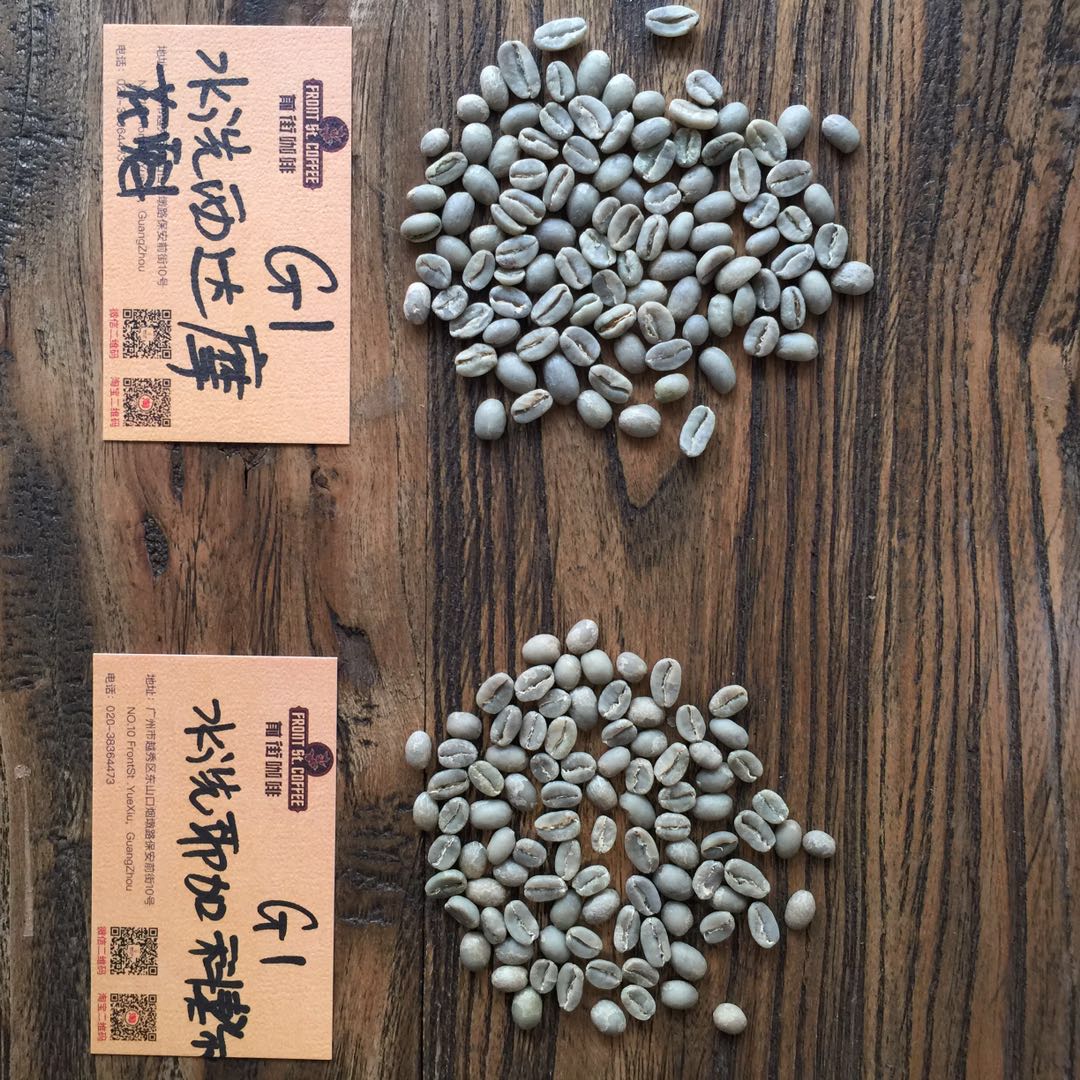
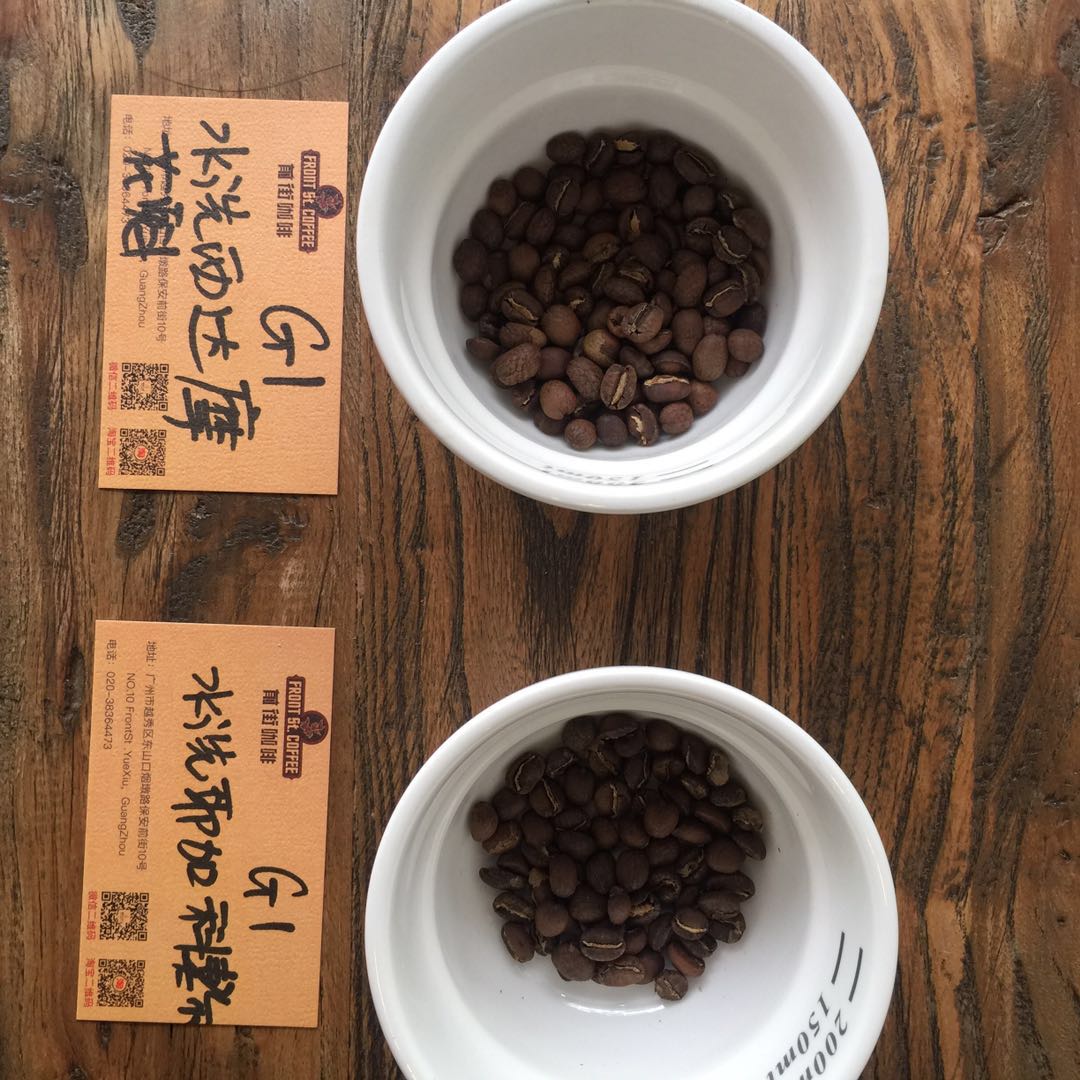
Answer: coffee beans vary in size from a wide variety and centralized handling.
First of all, let's take a look at how coffee is grown and picked in Ethiopia.
Ethiopia is a country full of wonders. What we say here, the Arabica coffee we have never drunk comes from this.
Nearly 2000 coffee varieties have been recorded in Ethiopia, including 1927 native varieties and 128 imported varieties. So just by looking at the appearance, Esther's coffee variety is "Grand View Garden", which has everything, long, short, thin, fat.
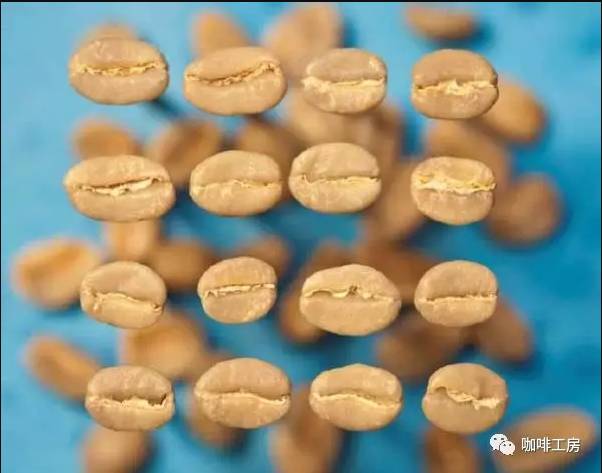
Long particles are found in all coffee growing areas in Ethiopia. From the actual proportion seen, there are more long particles in the western Jimma, including Limmu and Kaffa, and less in sidama (Sidamo) or yirgacheffe (Yega Sheffield).
Small particle species, the appearance is relatively round, the bean body is very small, mostly between 14-15 orders, this variety should be the most familiar to us, in Sidamo and Yegashiri can often see their figure, I have also seen in a harrar sample, also seen in Jimma local sales of coffee beans, compared to other regions, sidama and yigracheffe and surrounding arsi, guji have more native varieties of this small particles.
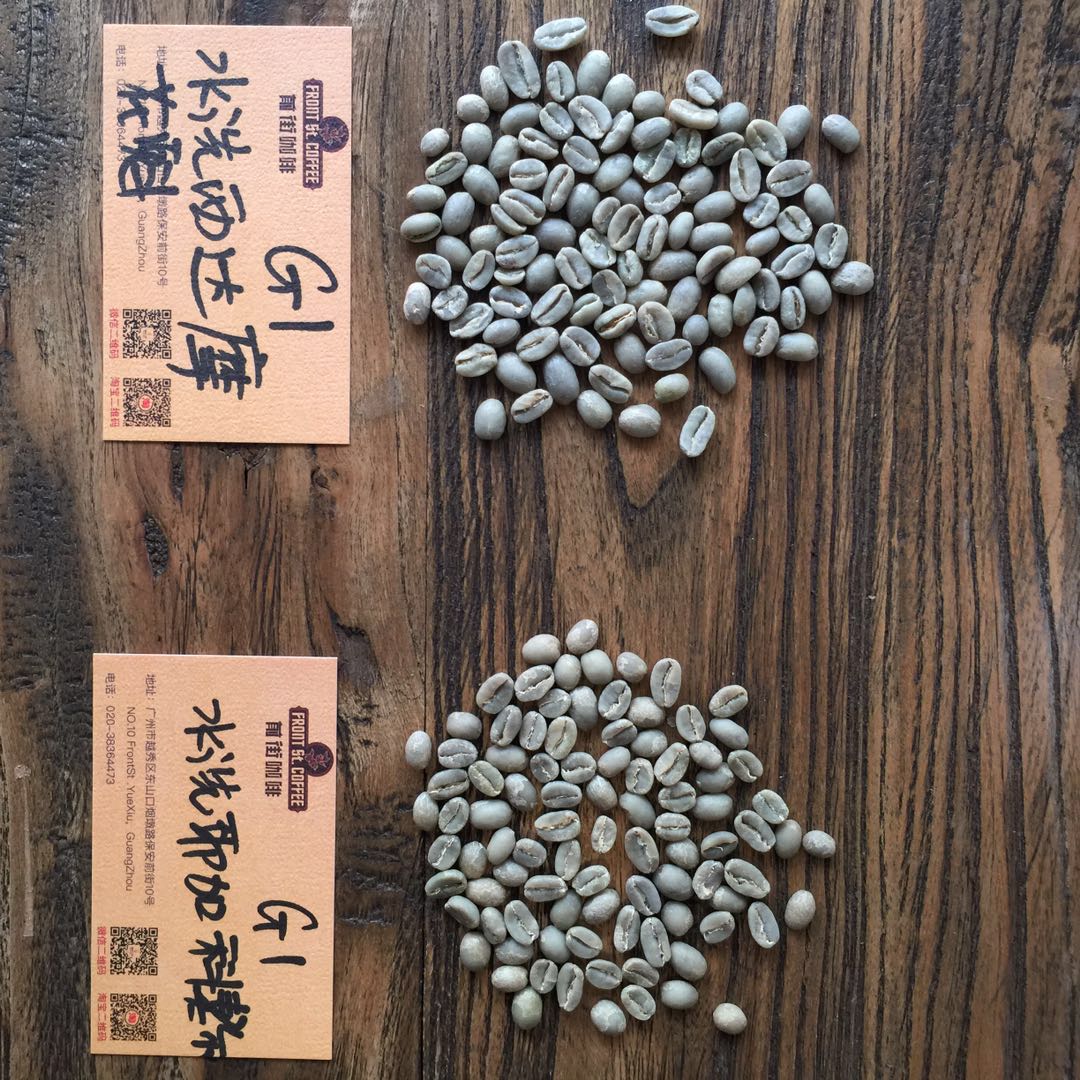
In addition to the wide variety of coffee, the way coffee is grown also affects the variety mix of Ethiopian coffee beans.
Ethiopia's coffee cultivation is divided into:
● forest coffee forest coffee (8-10%), coffee trees and other crops coexist in the primeval forest, without any artificial care, farmers will pick coffee fruits regularly.
● forest-semi-forest coffee semi-forest coffee (30-35%), the coffee planting area is between the forest and the range of farmers' lives, coffee trees are naturally produced varieties like forest coffee, and farmers will manage coffee planting areas and grow other cash crops.
● pastoral coffee garden coffee (50-55%), coffee trees are planted around farmers' living areas, and most of them are grown by farmers themselves.
● plantation coffee plantation coffee (5-6%), a large private grower, has more treatment facilities and production capacity.
Most of the coffee cultivation in Sidamo and Yega Xuefei belongs to the pastoral coffee model, in which coffee farmers plant coffee trees near their living areas and harvest them during the harvest season. it is then sent to a nearby treatment plant built on water for unified treatment (or purchased by a middleman). In addition to a small number of plantations that have the strength to grow, pick and handle raw coffee beans independently, many coffee beans from different regions and varieties will be centrally processed by the processing plant and then sent to the auction house for official evaluation and grading. This is one of the reasons why many Ethiopian coffee beans are named after processing plants or cooperatives, and it is also one of the reasons why the same batch of coffee beans are mixed with multiple coffee varieties. even the flavor of different batches of coffee beans produced by the same treatment plant will be significantly different.
Question2: what do you mean by G1 and G2 of Ethiopian coffee beans? What's the difference?
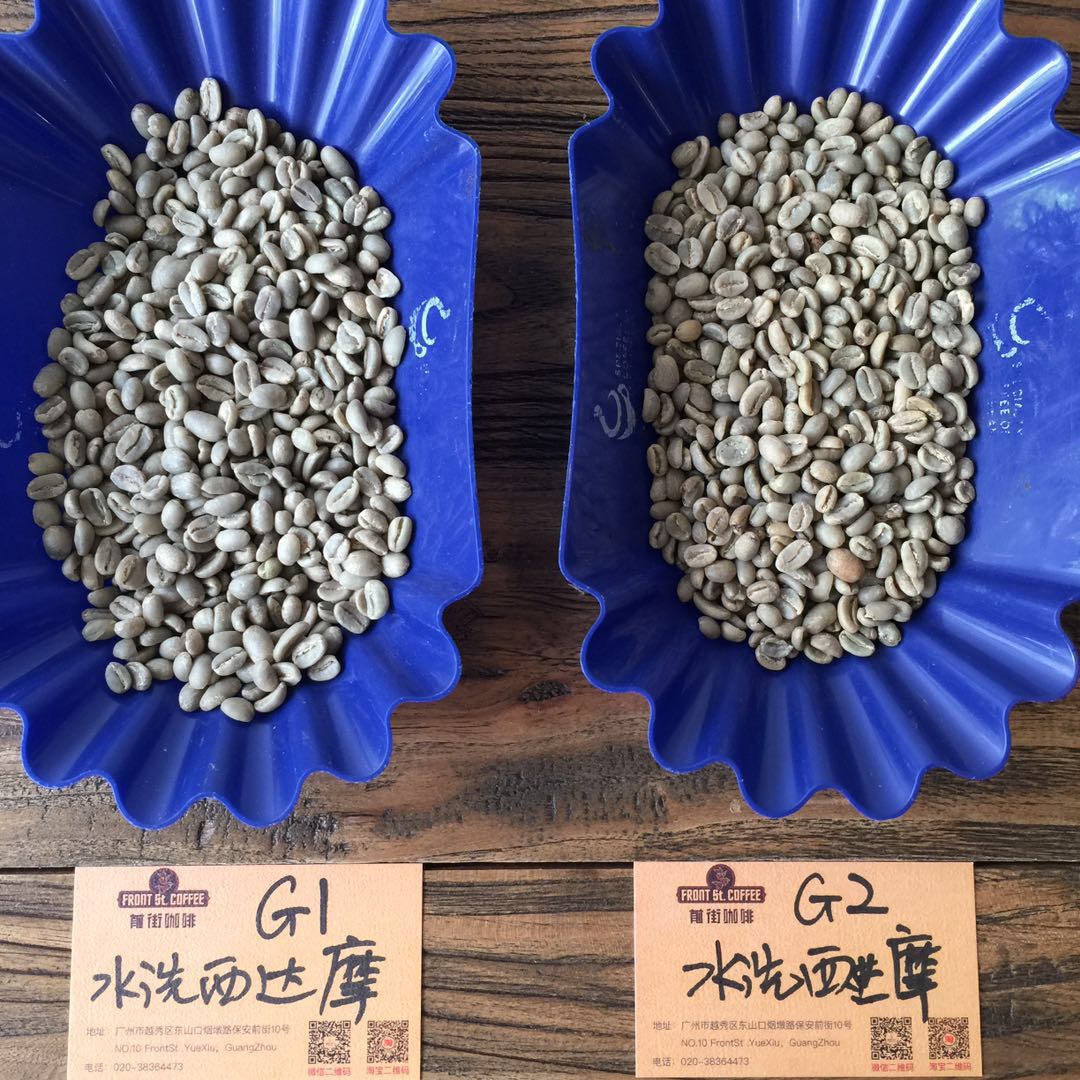
Answer: G1 and G2 are different grades of Ethiopian coffee beans.
The definition of the grade of Essex coffee is complicated.
First of all, the Ethiopian Ministry of Agriculture has a department called Cupping and Liquoring Unit CLU, which is responsible for the quality approval of exported coffee, which includes the very important responsibility of grade definition; CLU existed before ECX.
Before the advent of ECX, for washed coffee, the export grade was G1 and G2; for sun-cured coffee, the export level was G3, G4, G4, G5, which means that the highest level of sun exposure was G3.
After the emergence of ECX, there is a redefinition of classification, and there is no difference in the classification name of washing, while the definition of sunlight appears for the first time G1, which is why Esser's sunburn is G1 and G2, while G3 begins to decrease slowly.
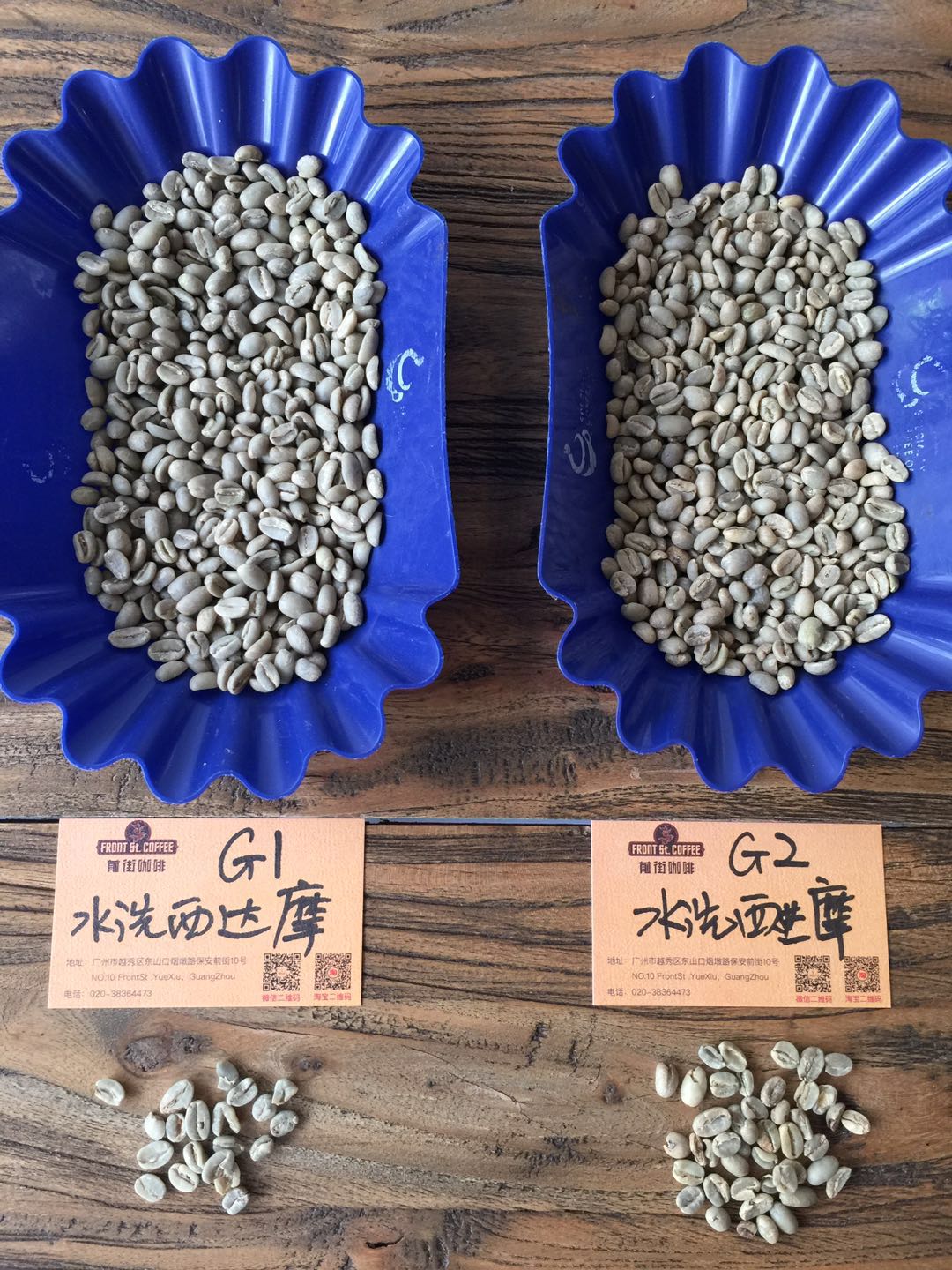
Washed beans Grade1 represents 3 defective beans per 300g raw beans, and Grade2 represents 4 defective beans per 300g. Of course, in fact, the standards of defective beans between sellers and buyers must be a little different (otherwise, why else can we pick out so many defective beans? ), but the comparison of defect rates is still easy to tell. The defective beans in the G1 are significantly fewer than those in the G2, which means that, excluding the effects of specific flavor and roasting, Ethiopian G1 coffee beans are of higher quality and higher scores than G2 coffee beans, at least clearly distinguishable in terms of defective flavor.
Question 3: is there any difference in flavor between large particles and small particles in Ethiopian coffee beans?
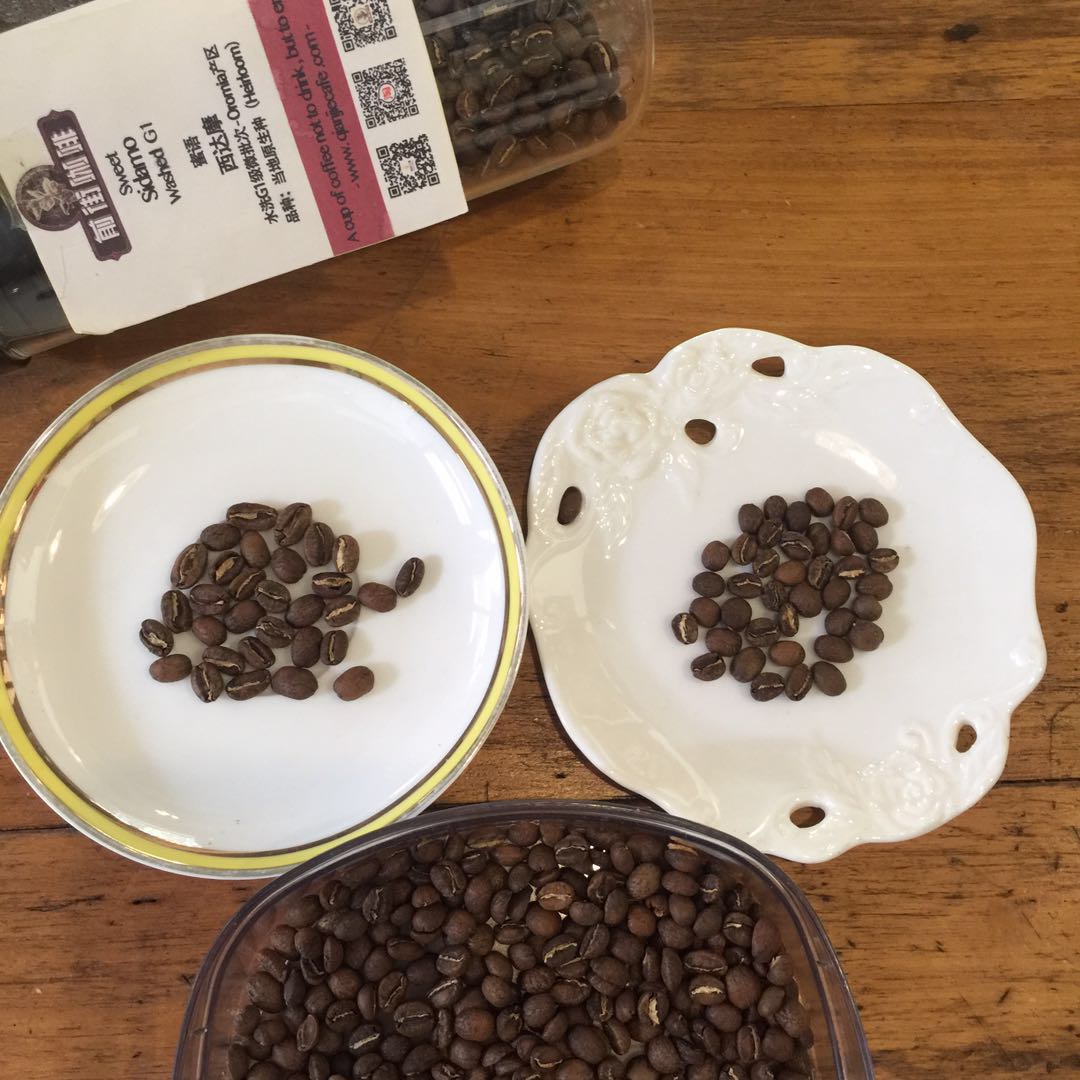
In order to verify this problem, the editor decided to pick two sets directly and compare them. Taking washing Sidamo G1 as an example, coffee beans with obvious differences in size were selected in distribution, and many people blindly tested them with the same cooking parameters and techniques to judge whether the flavor of large particles was different from that of small particles.
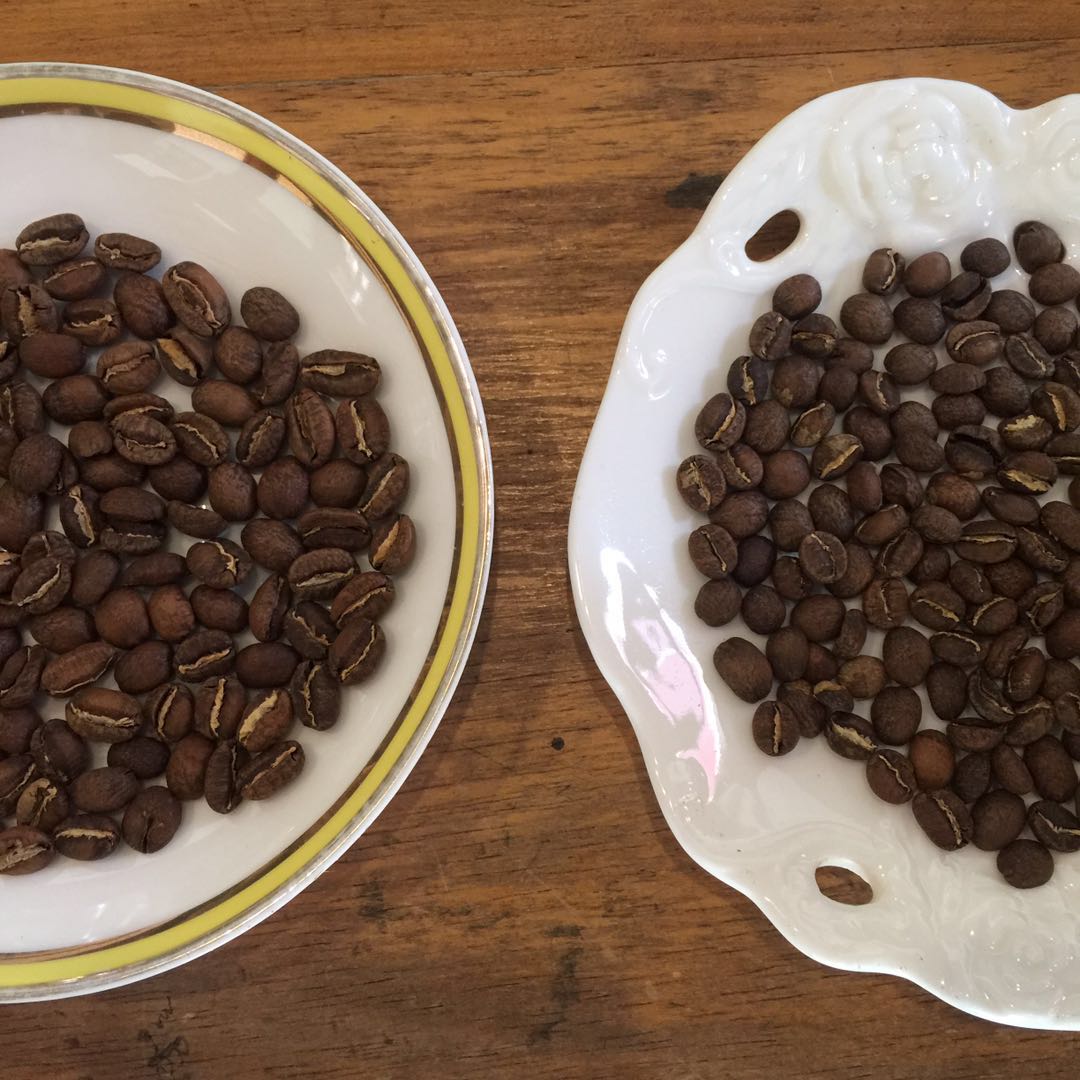
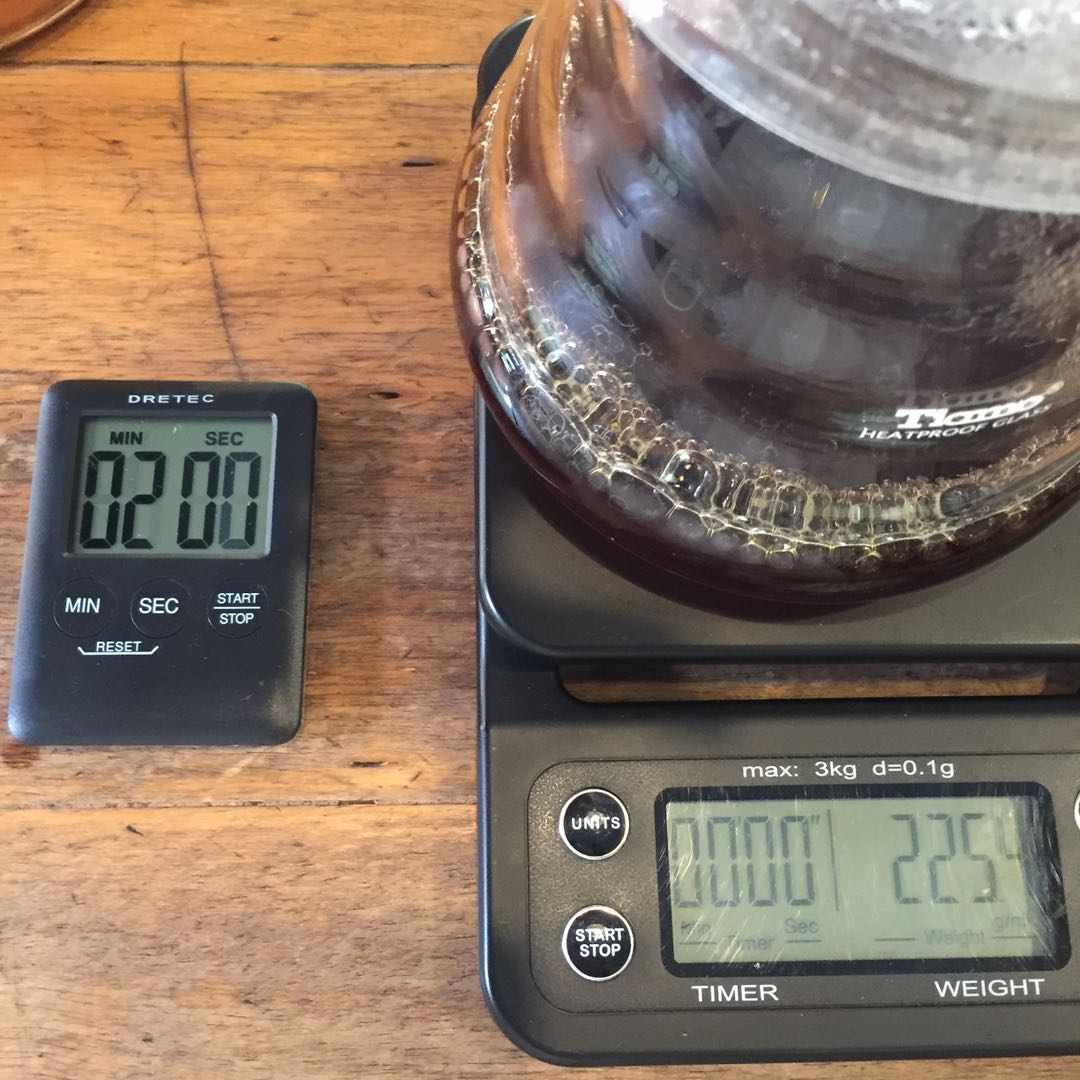
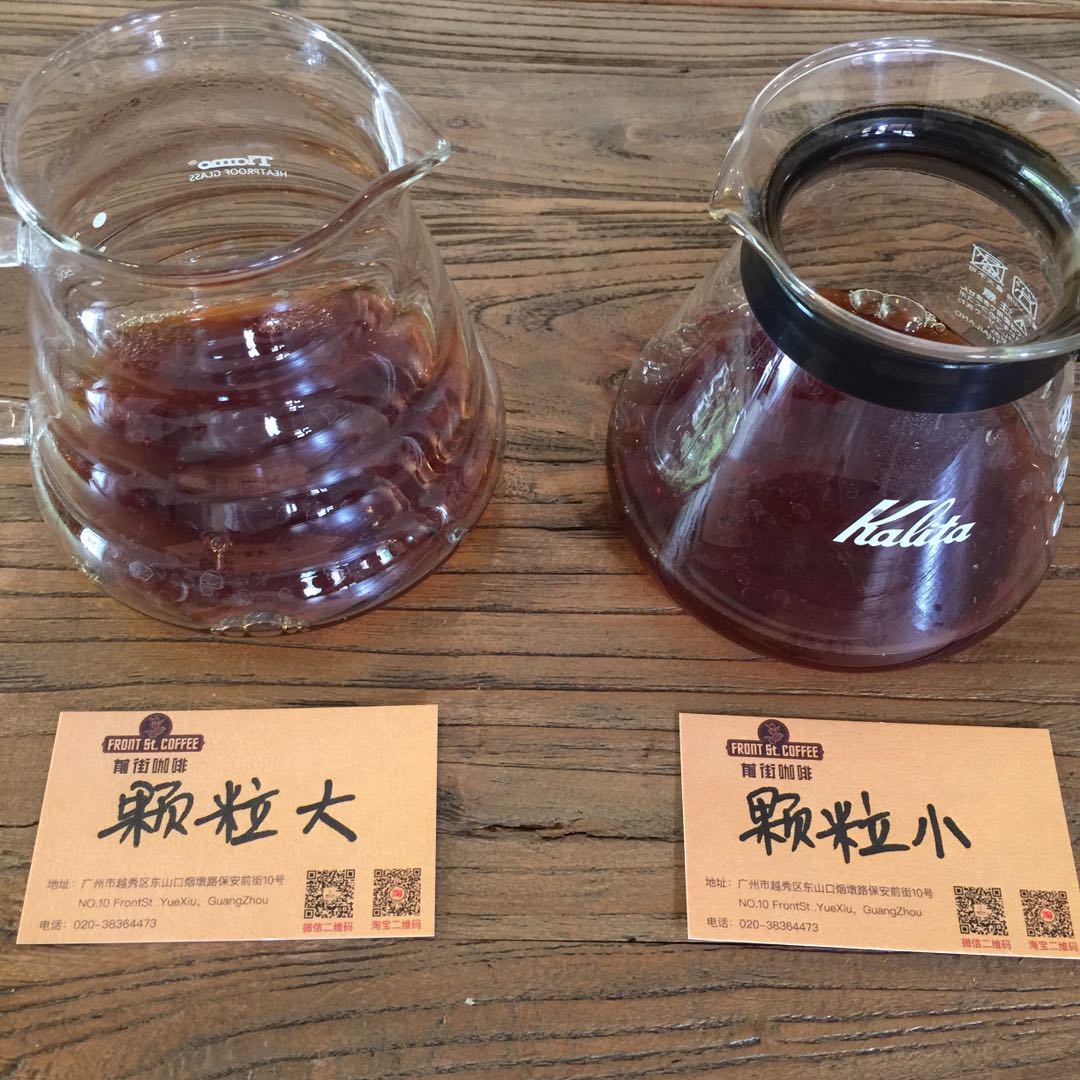
Cooking parameters:
Degree of grinding: BG4E
Water temperature: 90 degrees
Powder / water ratio: 1:15
The method of flushing and cooking: the first water injection is 30g, steaming for 30s, the second water injection is 104g, the second water injection is 225g, and the extraction time is about 2 minutes.
Blind test process.
OK, I know you are in a hurry to know the result, so we skipped the process. Let's just announce the conclusion: there is a difference.
After consistent analysis, we blindly felt that small particles washed Sidamo G1, which was sweet in flavor, while large particles washed Sidamo G1, which was obviously sour. In terms of flavor hierarchy and richness, both of them are thinner than the normal state (mixing), while the acidity of coffee beans with large particles is believed to be due to the low degree of roasting and shallow particles. As for the more obvious difference. No.

Finally, it is concluded that:
In fact, no matter Ethiopia, Brazil or Indonesia, these coffee producing areas with the defect rate as the grading system, there will be a significant imbalance in the particle size of coffee beans, especially after roasting. Different coffee varieties have different roasting expansion rates, which enlarges the differences between coffee bean particles. However, it is the uneven particle size that causes a slight difference in the degree of baking, which also makes the coffee more hierarchical and rich. Therefore, do not adhere to too superficial differences, there is loss, there is gain, the mix of varieties and uneven particle size is the reason for the rich flavor and colorful aroma of Ethiopian coffee.
Finally, people with obsessive-compulsive disorder can try other single coffee beans with a uniform variety of sieve grades, such as Kenya and Colombia.
Important Notice :
前街咖啡 FrontStreet Coffee has moved to new addredd:
FrontStreet Coffee Address: 315,Donghua East Road,GuangZhou
Tel:020 38364473
- Prev

Starbucks coffee too expensive? Make yourself a cup of coffee.
Professional barista communication, please pay attention to coffee workshop (Weixin Official Accounts cafe_style) With the popularization of coffee culture and consumption habits, more and more people can know and love coffee as a charming drink. However, for some students with lower incomes and brick-moving parties, Starbucks at 30 yuan a cup seems to be a bit of pressure, and occasionally take a photo (zhuang) to taste
- Next
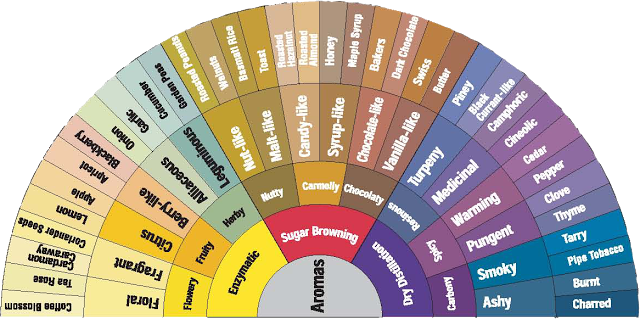
Professional coffee roasting | what fragrance is added by "burning and increasing fragrance"?
For the exchange of professional baristas, please pay attention to the coffee workshop (Wechat official account cafe_style). Since its inception, we have mostly played with foreigners' ideas and baking rhythms, especially Home-barista, Nordic Forum, Scott Rao, Rob Hoos, Cafeculture, WCRC or German SCAE competitions, for no other reason. The information is open enough and the demonstration is easy.
Related
- Beginners will see the "Coffee pull flower" guide!
- What is the difference between ice blog purified milk and ordinary milk coffee?
- Why is the Philippines the largest producer of crops in Liberia?
- For coffee extraction, should the fine powder be retained?
- How does extracted espresso fill pressed powder? How much strength does it take to press the powder?
- How to make jasmine cold extract coffee? Is the jasmine + latte good?
- Will this little toy really make the coffee taste better? How does Lily Drip affect coffee extraction?
- Will the action of slapping the filter cup also affect coffee extraction?
- What's the difference between powder-to-water ratio and powder-to-liquid ratio?
- What is the Ethiopian local species? What does it have to do with Heirloom native species?

